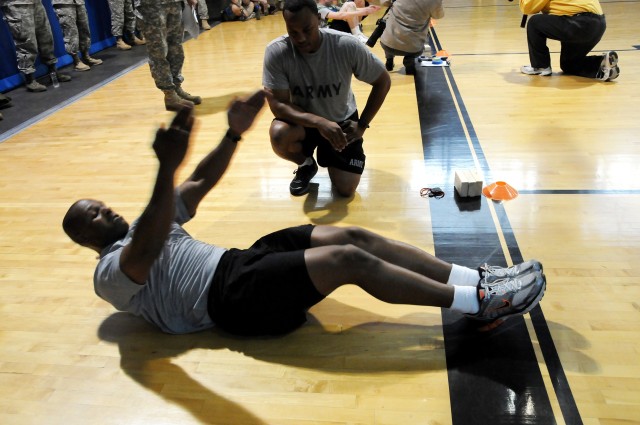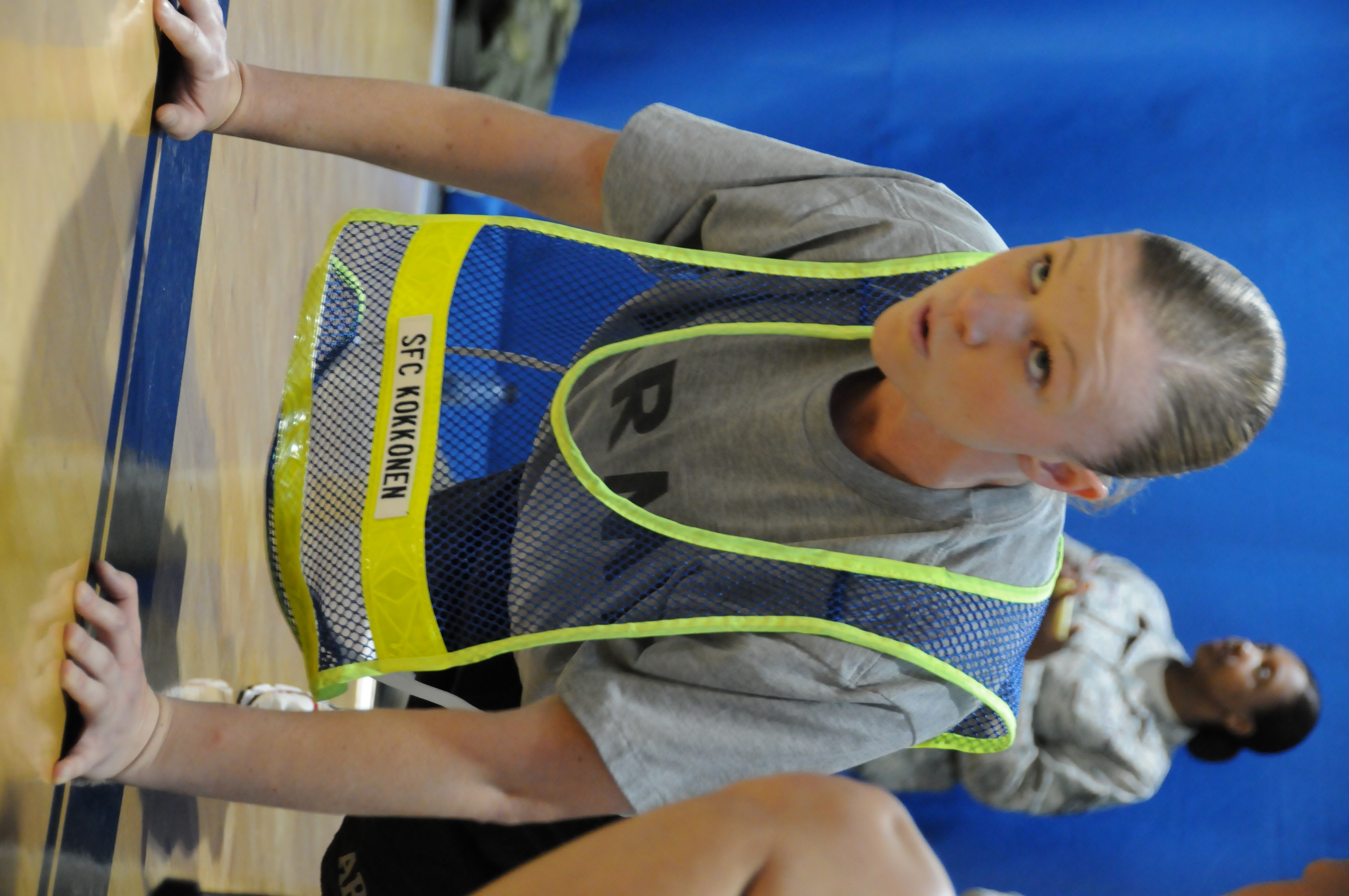WASHINGTON (Army News Service, April 11, 2011) -- So far, pilot testing for the new Army Physical Readiness Test has only been conducted at Fort Jackson, S.C., where the Army Physical Fitness School is located.
This week, however, the new Army Physical Readiness Test, or APRT, will be given to a pilot unit at Fort Leonard Wood, Mo., and scheduled to take it with them was Maj. Gen. Richard Longo, deputy commanding general for initial military training at the U.S. Army Training and Doctrine Command.
"I'm setting the standards for 52-year-olds," Longo said with a smile after his sergeants performed a demonstration at the Pentagon, April 7. His trip, though, was canceled because of the looming government shut-down which was averted.
"A lot of people ask, 'hey, what's the standard, how many push-ups do I have to do'' We have no idea at this stage," Longo explained. "We're going to be giving this test in pilot form to 10,000 Soldiers between now and September -- all age groups, male and female, Active Component and Reserve Component, and Soldier-just-entered-the-Army and Soldier-been-in-the-Army."
"We really need this data so we know what excellence looks like yet, what average looks like, and what not meeting the standard looks like," Longo said.
The new test will still be given twice a year, according to current plans, and the new Army Combat Readiness Test -- run in battle gear with weapon -- may be used primarily only as a pre-deployment measurement tool for commanders.
But one thing's for certain the new tests: Short duration does not necessarily equate to easy. Especially when performing push-ups for the Army's new APRT.
"Because there is no rest period allowed, and the positioning of the hands is less -- the technical word is -- 'loosey-goosey,' we're finding (the new test) to be harder. We are learning some lessons, none of which we could even begin to call preliminary conclusions, yet," Longo said.
"There's a reason why we teach precision of movement," said Frank Palkoska, director of U.S. Army Physical Fitness School at Fort Jackson, S.C.
"In the past, we didn't enforce much precision and exercise prescription as we do today. There's an important aspect of that we teach the correct motor pattern in a controlled environment so that when Soldiers have to execute that same motor pattern in an uncontrolled environment that we call combat, they have a proper motor pattern to revert back to. This also helps us avoid injury, which has been a big problem for our Army in the past," Palkoska said.
To illustrate the difference, Sgt. 1st Class Amanda Kokkonen, Advanced Individual Training Platoon Sergeant of the Year, told how she used to perform the PT test.
"During the two minutes of push-ups of the APFT (Army Physical Fitness Test) we currently do, I do between 60 to 70. Today, (at the Pentagon demo) I did about 29 push-ups in one minute. It sounds like a big difference but for me, the biggest difference is the fact that I can't move my hands and use different muscle groups. Also, not being able to take a break, or sag or bow my back definitely makes a big difference.
"With the new test, though, I definitely see an increase in the number of push-ups we can do, properly. Precision and technique definitely come into play," Kokkonen said.
Under the new test, the Soldier must place their hands in an anatomically correct position. This exhibits the maximum force by virtue of the hand placement, Palkoska said.
"We're testing their ability for one-minute's worth of muscular endurance and this becomes a true muscular endurance assessment. In the old APFT, the two minutes of push-ups wasn't a true muscular endurance assessment because we allowed you to rest," Pakoska said.
The new test is aligned with the new PT manual, which is TC3-22.20 which replaced FM21-20.
"If you're still looking at the old doctrine, go online and download a copy of the new TC which aligns the physical training with the warrior tasks and battle drills we ask of all of our Soldiers, regardless of MOS (Military Occupational Specialty), in combat," Longo said.
The manual can be delivered through an app on any type of phone for free. Along with the text are video demonstrations of each exercise.
In the coming weeks, U.S. Army Forces Command will identify those units where pilot testing will occur through September.
Implementation is a different story, said Longo. While the program may be implemented as early as October, he says he may learn that more data is needed before making this decision.
"This is catching on because of two reasons: the first is that all of our privates who are going through initial entry training, all of our second lieutenants who are going through the basic officer leadership course, all of our warrant officers going through the warrant officer basic course are being exposed to this.
"Secondly, all of our leaders who go through the warrior leader course, the senior leader course, the advance leader course, the captain's career course, the pre-command course, all of our leaders are being exposed to this as well, so this new change in the way we're conducting PT will be the only standard they know," Longo said.
Related Links:
TRADOC revises Army Physical Fitness Test
Video: Lt. Gen. Hertling on the revised Army Physical Fitness Test
STAND-TO!: Soldier Athlete Initiative
Training Circular 3-22.20 - Army Physical Readiness Training (AKO Login Required)






Social Sharing